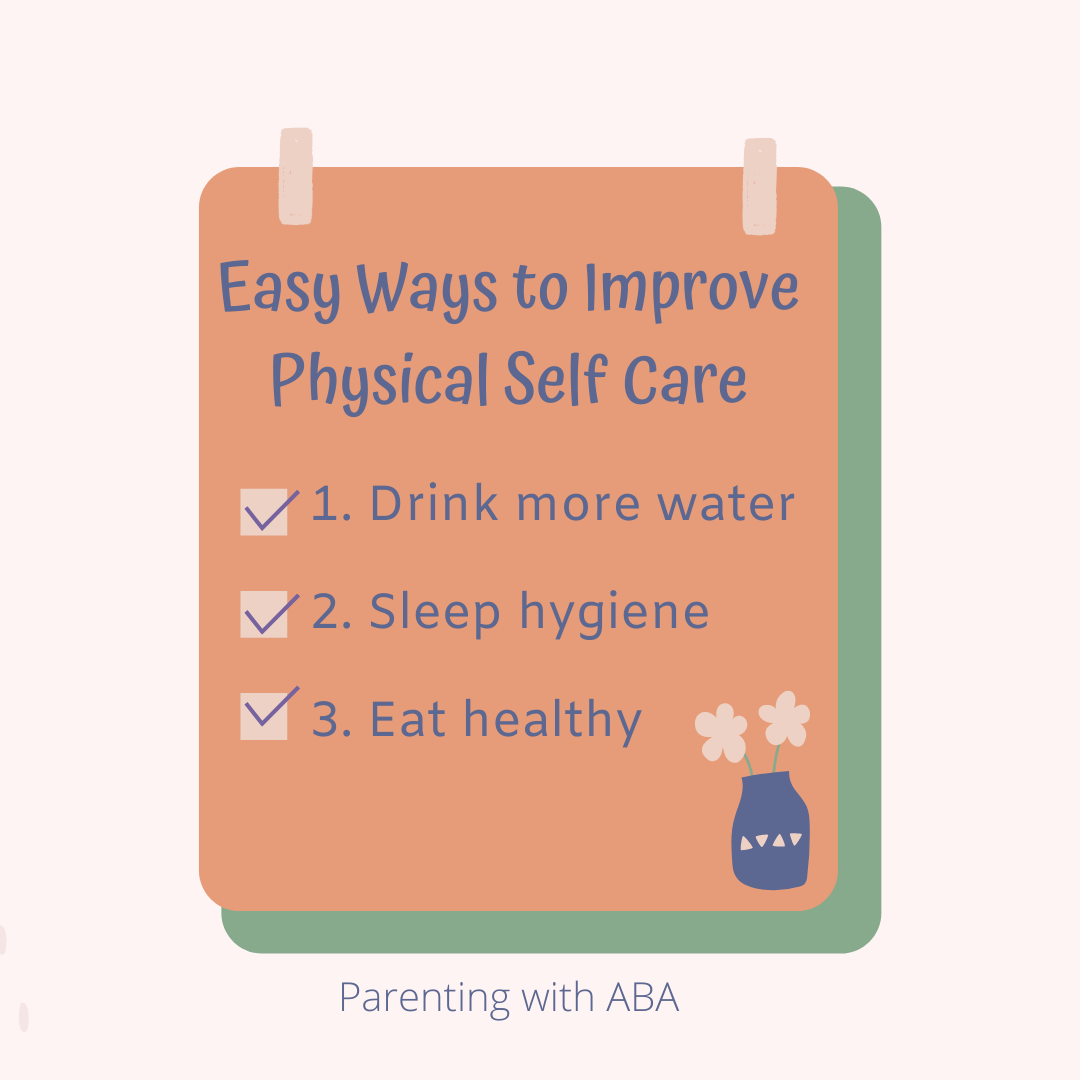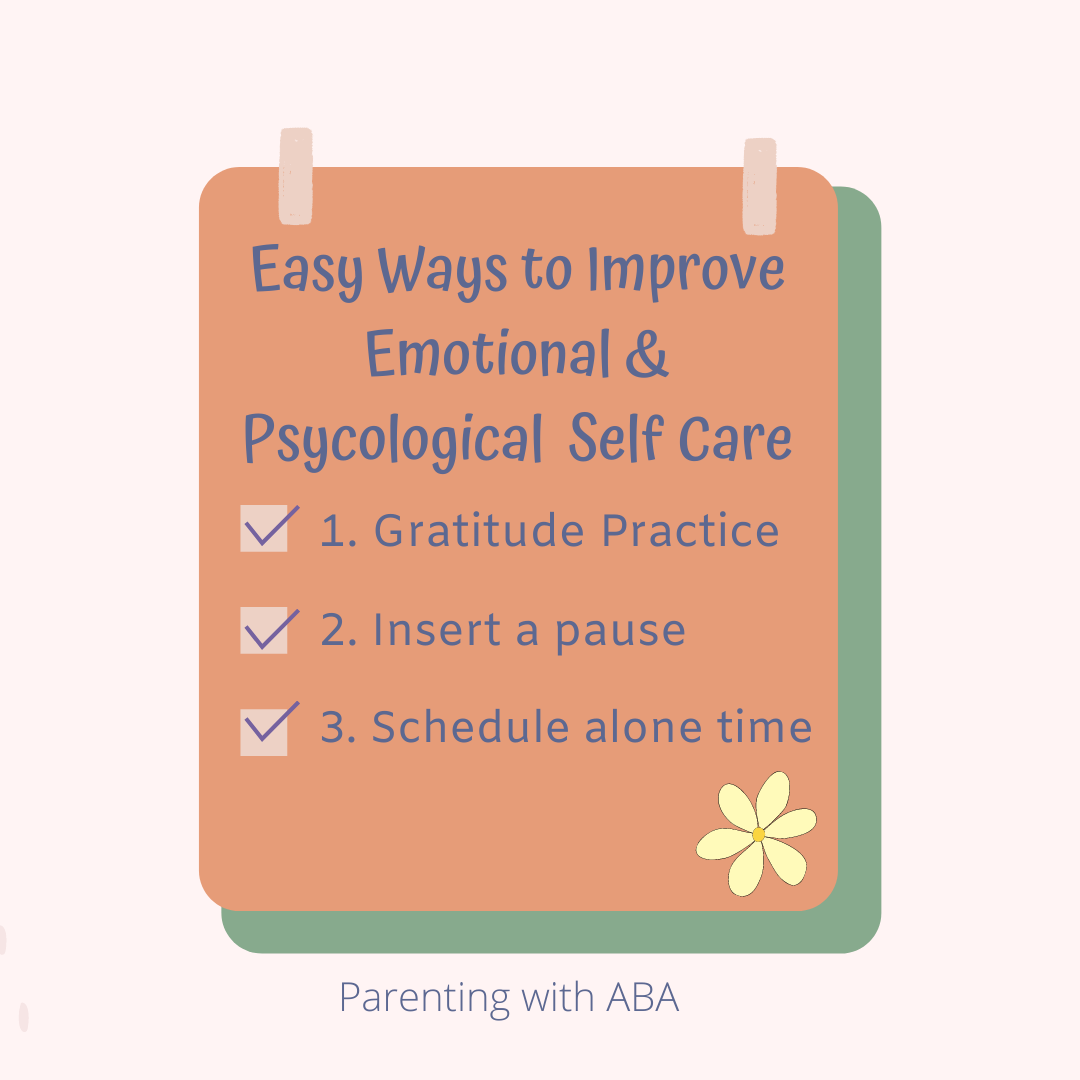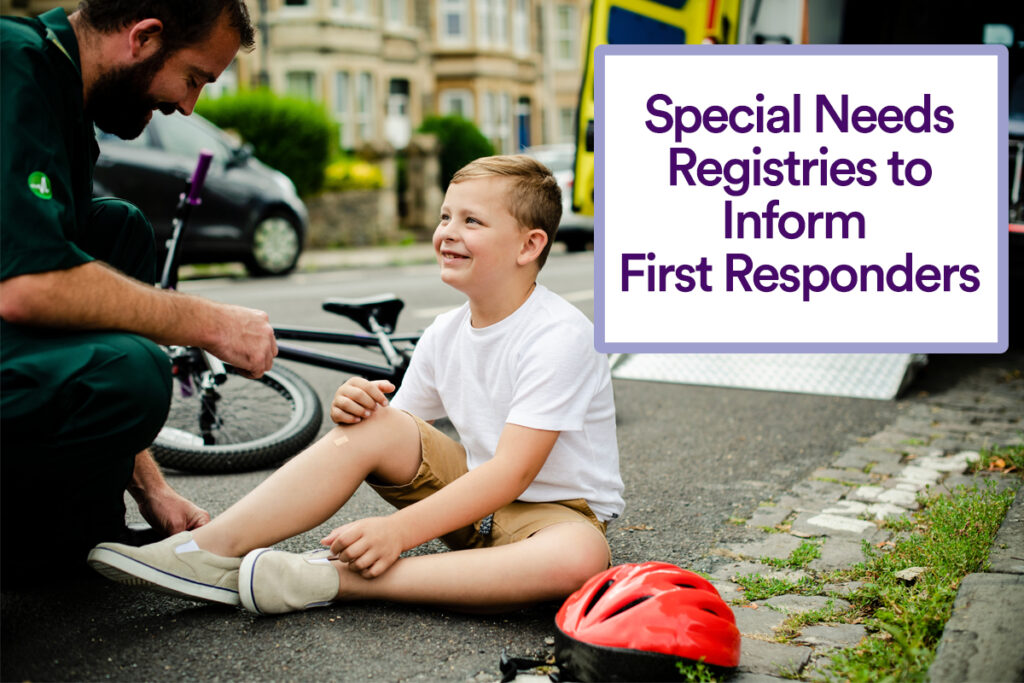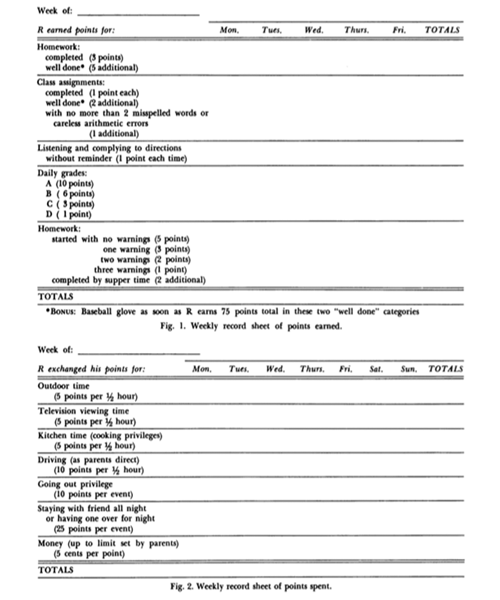By Leanne Page; originally posted on Parenting with ABA

When you hear the words “self-care”, what is your reaction? A sigh of relief? Rolling your eyes as it feels like just ONE. MORE. THING.?
As a busy mom, we’ve all heard the expression to put your own oxygen mask on first. But when are we supposed to do that?
Self-care doesn’t have to mean bubble baths and beverages. It doesn’t have to mean shopping or pedicures. So what the heck does it mean then?
The World Health Organization defines self-care as “the ability of individuals, families and communities to promote health, prevent disease, maintain health, and to cope with illness and disability with or without the support of a healthcare provider”.
And the American Psychological Association says “Self-care has been defined as providing adequate attention to one’s own physical and psychological wellness. Beyond being an aspirational goal, engaging in self-care has been described as an “ethical imperative”.”
Self care means paying attention to your own wellness- emotional, physical, and psychological. How are YOU doing right now? And the question you’ve heard me encourage you to use before- 6 little magic word: What do you need right now?


Quick and easy ways to improve your physical self-care:
- Drink more water. Make this easier by using habit stacking. This means take an existing habit and add the step of drinking a glass of water on top of it. In ABA speak, the existing habit becomes the SD for drinking water. When I turn on my coffee maker in the morning, I drink a big glass of water while the coffee machine heats up.
- Sleep hygiene. Turn off screens earlier in the evening. Go to bed earlier. Remove distractions. Journal before bed. Whatever works for you to promote good sleep!
- Eat healthy. Instead of focusing on removing certain foods from your diet, just add in one healthy thing a day- like a fruit or vegetable. Habit stack by adding a piece of fruit to your afternoon cup of coffee, tea, or water.
Quick and easy ways to work on your emotional & psychological self-care:
- Gratitude practice. There is SO much research on the benefits of gratitude practice for your mental health. This doesn’t have to be time consuming or involved. Habit stack by thinking about one thing you are grateful for every time you brush your teeth. Or ask every member of your family what they are grateful for each day (or call it a happy thing or a good thing) every time you all sit down at the kitchen table together.
- Insert a pause. Just a simple pause throughout your day can help! When you are starting to feel emotionally heightened, pause and take some deep breaths. Insert this pause before you react to your kids or something else. Just giving yourself that moment to breathe and collect your thoughts can be wonderful for your self-care!
- Schedule alone time. Work with your partner or support system to have a standing date with yourself on the calendar. It may be 20 minutes to sit on the back porch or an hour on the weekend to go to a yoga class. Whatever works for you! Put it on your calendar and treat it like an important appointment. It is important!
If you like bubble baths and wine- feel free to use it for your self-care. But that’s not all that matters! What matters is that you find a way to give yourself a little breather from the mental load of motherhood.
Prioritize yourself- even just in small increments. Learn something new, try a new hobby, read a book, exercise. Find what works for YOU and schedule time for it. Guard that time as an important appointment because you are worth it.
What small ways can you incorporate more self care into your days this week?? Try something and let me know how it goes!
Leanne Page, MEd, BCBA, is the author of Parenting with Science: Behavior Analysis Saves Mom’s Sanity. As a Behavior Analyst and a mom of two little girls, she wanted to share behavior analysis with a population who could really use it- parents!
Leanne has worked with children with disabilities for over 10 years. She earned both her Bachelor’s and Master’s degrees from Texas A&M University. She also completed ABA coursework through the University of North Texas before earning her BCBA certification in 2011. Leanne has worked as a special educator of both elementary and high school self-contained, inclusion, general education, and resource settings.
Leanne also has managed a center providing ABA services to children in 1:1 and small group settings. She has extensive experience in school and teacher training, therapist training, parent training, and providing direct services to children and families in a center-based or in-home therapy setting.
Leanne is now located in Dallas, Texas and is available for: distance BCBA and BCaBA supervision, parent training, speaking opportunities, and consultation. She can be reached via Facebook or at Lpagebcba@gmail.com.





